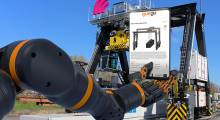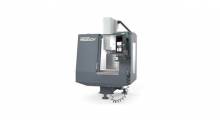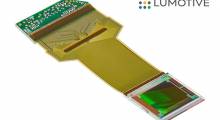Fetch Robotics, a leader in cloud robotics and on-demand automation, today announced the immediate availability of Workflow Builder, the company’s new drag-and-drop development toolkit that allows shippers to implement flexible automation in existing manufacturing, distribution and fulfillment facilities without the time, expense, and inflexibility of fixed automation or traditional autonomous mobile robots (AMRs).
Based on Blockly, the language used to teach non-programmers to code, Workflow Builder provides a visual and intuitive tool that shippers can use to deploy flexible automation in days, iterate to perfect workflows, change workflows as needs evolve, and later integrate into WMSs (warehouse management systems), WESs (warehouse execution systems), or fixed automation—and do all of this in-house without having to rely on third-party resources.
According to spokesmen, Workflow Builder was created as a simple to use, on-demand alternative to fixed warehouse automation solutions or traditional AMR solutions. Fixed automation solutions require the expense and time of a third party for design, installation and maintenance.
Fixed automation solutions are also difficult and costly to modify, making it challenging for warehouse managers to adapt to changing business needs or workflows. Traditional AMR solutions often require facilities to be modified, floors to be labeled with QR codes, and integration with a WMS is immediately required as part of the implementation. While these solutions can be impactful, they are expensive and time consuming to deploy, and often lead to workflows that can’t be updated or changed without extensive outside support.
“Workflow Builder fundamentally changes the way we can manage our warehouse automation,” said Lee Weisenberger, Managing Director of IT at Universal Logistics. “With Workflow Builder, all we have to do is drive a robot around the facility to map it, lay out workflows, “drag and drop” device triggers into workflows, and then deploy the AMRs. We can easily change workflows or add new workflows on our own. Workflow Builder puts the power and control back in the hands of the customers instead of being held hostage by months and millions of dollars of outside integration work.”
Workflow Builder removes these pain points by allowing customers to design, implement, and redesign their own custom automation workflows using Fetch’s AMRs, removing the need for any third-party integration work and saving both time and cost. With a simple, easy-to-use automation development environment that requires no coding, Workflow Builder gives customers a platform that enables them to develop and deploy their own automation in days, and continue to iterate on workflows as business needs change or are added. When paired with Fetch’s RaaS (Robots-as-a-Service) cloud-based business model, Workflow Builder allows companies to see ROI almost immediately, modify workflows until perfect, and then complete the integration work later if desired.
Although Workflow Builder is used for device, WMS, and WES integration, it is not dependent on the use of a WMS or WES, and does not require an integrator, giving the customer full control over their facility in both the short- and long-term.It can be deployed with WMS-related workflows such as picking and putaway, or workflows completely outside the WMS such as pack station replenishment, empty tote return or recycling removal. Additionally, Workflow Builder “partner blocks” also enable customers to use the same drag-and-drop automation development with devices such as barcode scanners, RFID detection devices, mobile printers, and network buttons so that there is no custom coding required to support these types of devices. Since Fetch provides over-the-air updates to AMRs, new partner blocks can be added and used right away without anyone having to visit the customer’s facility.
In an interview with LM, Stefan Nusser, VP or Product at Fetch Robotics, said pain points have been identified:
“Workflow Builder is a visual programming environment. We have worked with many customers to identify a core set of features that covers a wide variety of use cases,” he said. “But there will always be some less frequently occurring use cases that cannot be addressed with the visual programming approach. In that case, the integration will have to use the underlying Workflow Builder APIs. Over time, we will be adding more capabilities to the platform and will develop a rich ecosystem of vendor blocks that supports a variety of 3P devices,” concluded Nusser.
About the Author
Follow Robotics 24/7 on Linkedin
About the Author
Follow Robotics 24/7 on Linkedin
Article topics
Email Sign Up















